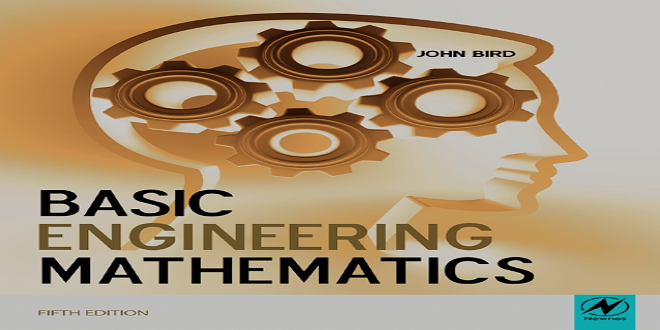Introduction
Basic Engineering Mathematics 5th Edition introduces and then consolidates basic mathematical principles and promotes awareness of mathematical concepts for students needing a broad base for further vocational studies. In this fifth edition, new material has been added to many of the chapters, particularly some of the earlier chapters, together with extra practical problems interspersed throughout the text.
The extent of this fifth edition is such that four chapters from the previous edition have been removed and placed on the easily available website. The chapters removed to the website are ‘Number sequences’, ‘Binary, octal and hexadecimal’, ‘Inequalities’ and ‘Graphs with logarithmic scales
Whole numbers are called integers. +3,+5 and +72 are examples of positive integers; −13,−6 and −51 are examples of negative integers. Between positive and negative integers is the number 0 which is neither positive nor negative. The four basic arithmetic operators are add (+), subtract (−), multiply (×) and divide (÷). It is assumed that adding, subtracting, multiplying and dividing reasonably small numbers can be achieved without a calculator. However, if revision of this area is needed then some worked problems are included in the following sections. When unlike signs occur together in a calculation, the overall sign is negative. For example, 3 + (−4) = 3 + −4 = 3 − 4 = −1 and (+5)× (−2) = −10 Like signs together give an overall positive sign. For example, 3 − (−4) = 3 − −4 = 3 + 4 = 7 and (−6)× (−4) = +24
Revision of addition and Subtraction
You can probably already add two or more numbers together and subtract one number from another. However, if you need a revision then the following worked problems should be helpful
- 2 − 9 is not possible; therefore ‘borrow’ 1 from the tens column (leaving 2 in the tens column). In the units column, this gives us 12 − 9 = 3.
- (ii) Place 3 in the units column.
- (iii) 2 − 6 is not possible; therefore ‘borrow’ 1 from the hundreds column (leaving 5 in the hundreds column). In the tens column, this gives us 12 − 6 = 6.
- (iv) Place the 6 in the tens column
Revision of multiplication and division
You can probably already multiply two numbers together and divide one number by another. However, if you need a revision then the following worked problems should be helpful.
- 7 × 6 = 42. Place the 2 in the units (U) column and ‘carry’ the 4 into the tens (T) column.
- (ii) 7 × 8 = 56;56 + 4 (carried) = 60. Place the 0 in the tens column and the 6 in the hundreds (H) column.
Hence, 86 × 7 = 602
A good grasp of multiplication tables is needed when multiplying such numbers; a reminder of the multiplication table up to 12× 12 is shown below. Confidence in handling numbers will be greatly improved if this table is memorized. Use the best engineering research paper writing service to score top grades in your assignments contact us to buy an engineering paper writer.
 Jobsearchdone.com Top News Share Website
Jobsearchdone.com Top News Share Website




